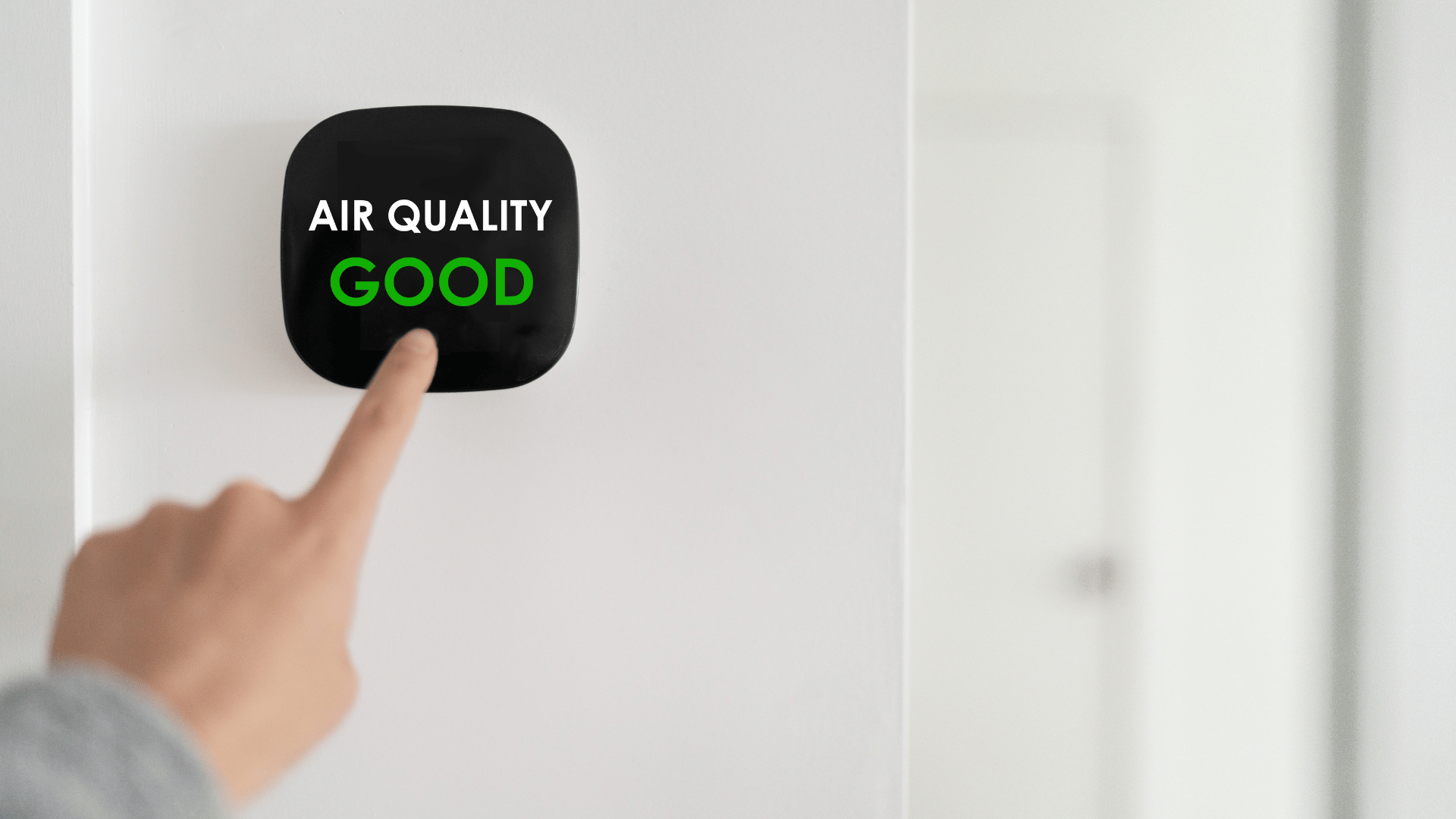While we often associate air pollution with smog-choked cities and industrial landscapes, the air we breathe within our homes can be just as harmful. Indoor air pollution (IAP) is a significant public health concern, impacting the air quality within our supposedly safe havens. This blog explores the various sources of indoor air pollutants, their detrimental effects on human health, and strategies to improve indoor air quality for a healthier living environment.
The consequences of poor indoor air quality extend beyond individual health. Lost productivity due to respiratory illnesses and increased healthcare costs associated with pollution-related diseases place a significant burden on society. Furthermore, research suggests a potential link between indoor air pollution and cognitive decline in older adults. By addressing indoor air pollution, we can not only safeguard our personal health but also contribute to a healthier and more productive society.
Pollutants and Sources: The Culprits Behind Indoor Air Pollution
Indoor air can harbor a multitude of indoor air pollutants, ranging from microscopic particles to harmful chemicals. One of the most common indoor air pollutants is tobacco smoke, both from active smoking and lingering secondhand smoke. Secondhand smoke contains over 7,000 chemicals, many of which are known carcinogens, and can trigger respiratory illnesses like asthma attacks.
Beyond tobacco smoke, several other factors affect indoor air quality (IAQ). Volatile organic compounds (VOCs) emitted from paints, varnishes, and household cleaning products can significantly contribute to poor indoor air quality. These VOCs can irritate the eyes, nose, and throat, and long-term exposure can lead to health problems like headaches and dizziness. Other common indoor air pollutants include fine particulate matter (PM2.5), dust mites, pet dander, and mold spores. These airborne particles can trigger allergies, respiratory infections, and worsen existing respiratory diseases like chronic obstructive pulmonary disease (COPD).
The sources of these indoor air pollutants are diverse. Inadequate ventilation, especially in tightly sealed modern buildings, traps pollutants indoors. Outdoor air pollution can also infiltrate indoor spaces through windows and doors, impacting indoor air quality even further. Additionally, certain household products, like air fresheners and cleaning agents, can contribute to harmful chemicals in the indoor environment.
Effects on Human Health: The Price We Pay for Poor Indoor Air Quality
Exposure to indoor air pollution poses a significant risk to human health. The World Health Organization (WHO) estimates that household air pollution exposure from solid fuels alone is responsible for 3.8 million deaths annually.
Long-term exposure to indoor air pollutants can exacerbate respiratory illnesses like asthma, chronic obstructive pulmonary disease (COPD), and lung infections. Airborne particles can irritate the airways, leading to coughing, wheezing, and shortness of breath. Recent studies suggest a link between poor indoor air quality and an increased risk of cardiovascular diseases like heart disease and stroke. Exposure to fine particulate matter (PM2.5) has been associated with increased blood pressure and inflammation in the cardiovascular system. Certain indoor air pollutants, such as formaldehyde and benzene found in some building materials and furnishings, are known carcinogens and can increase the risk of lung cancer. Exposure to indoor air pollution can also lead to a variety of other health problems, including headaches, fatigue, dizziness, and even neurodevelopmental problems in children.
The health effects of indoor air pollution can vary depending on several factors, including the type and concentration of pollutants, the duration of exposure, and individual health sensitivities. Older adults and children are particularly vulnerable to the adverse health effects of indoor air pollution due to their developing respiratory systems.
Tackling the Threat: Strategies to Improve Indoor Air Quality
Fortunately, several strategies can be implemented to improve indoor air quality and reduce indoor air pollutants. Ensure adequate ventilation by opening windows and doors regularly to allow fresh air to circulate. Identify and eliminate sources of indoor air pollutants whenever possible. For example, avoid smoking indoors, choose low-emitting building materials and furnishings, and store cleaning products properly. Consider using air purifiers equipped with HEPA filters to capture airborne particles and improve indoor air quality. Regularly clean carpets, upholstery, and other dust-collecting surfaces to minimize dust mites and pet dander. Maintain a low humidity level to prevent mold growth by using dehumidifiers if necessary. Certain indoor plants can help improve indoor air quality by absorbing some indoor air pollutants. However, it's important to research plants that are safe for pets and children.
The Future of Indoor Air Pollution Control: A Collaborative Effort
Combating indoor air pollution requires a multi-pronged approach. Government agencies like the Environmental Protection Agency (EPA) can play a vital role by setting stricter air pollution standards for building materials and household products. Collaborative efforts are needed between researchers, manufacturers, and policymakers to develop more sustainable and low-emitting building materials that prioritize indoor air quality.
Indoor Air Pollution: A Silent Threat in Our Homes
Individuals can also play a crucial role by making informed choices about the products they bring into their homes and by advocating for improved indoor air quality standards.
When renovating or purchasing furniture, look for products certified with low VOC emissions. This can significantly reduce harmful chemicals released into the indoor environment. Wood-burning fireplaces and stoves are significant sources of indoor air pollution, releasing fine particulate matter and carbon monoxide. Consider using natural gas appliances instead, or opt for electric alternatives whenever possible. Regularly clean and maintain heating and air conditioning systems (HVAC) to ensure optimal performance and efficient air filtration. Replace air filters according to the manufacturer's recommendations to capture airborne particles effectively. When outdoor air pollution levels are high, limit the amount of time windows are open. Utilize air purifiers with HEPA filters during these periods to minimize the infiltration of outdoor air pollutants. The more we understand the dangers of indoor air pollution, the better equipped we are to tackle this public health concern. Share information and resources about indoor air quality with friends, family, and community members to raise awareness and encourage collective action.
Climate Change and its Impact on Indoor Air Quality
Climate change is an emerging factor that can exacerbate indoor air pollution. As extreme weather events become more frequent, tightly sealed and energy-efficient buildings may experience increased indoor air pollution due to reduced ventilation. Additionally, wildfires fueled by climate change can significantly elevate outdoor air pollution levels, further impacting indoor air quality even with closed windows.
The combined threat of climate change and indoor air pollution necessitates a comprehensive approach. Sustainable building practices that prioritize natural ventilation alongside energy efficiency can offer a potential solution. Additionally, investing in renewable energy sources to reduce reliance on fossil fuels for electricity generation can contribute to cleaner outdoor air, ultimately improving indoor air quality as well.
Breathing Easy Starts at Home
Indoor air pollution is a silent threat lurking within our homes, but it's not an insurmountable challenge. By understanding the sources of indoor air pollutants, their health impacts, and implementing practical strategies to improve indoor air quality, we can create healthier living environments for ourselves and our families.
Through collaborative efforts between individuals, policymakers, and the scientific community, we can advocate for stricter regulations on building materials and household products, promote sustainable building practices, and develop effective technologies to combat indoor air pollution. Remember, breathing easy starts at home, and by taking action, we can ensure our homes truly become safe havens with healthy indoor air quality.










